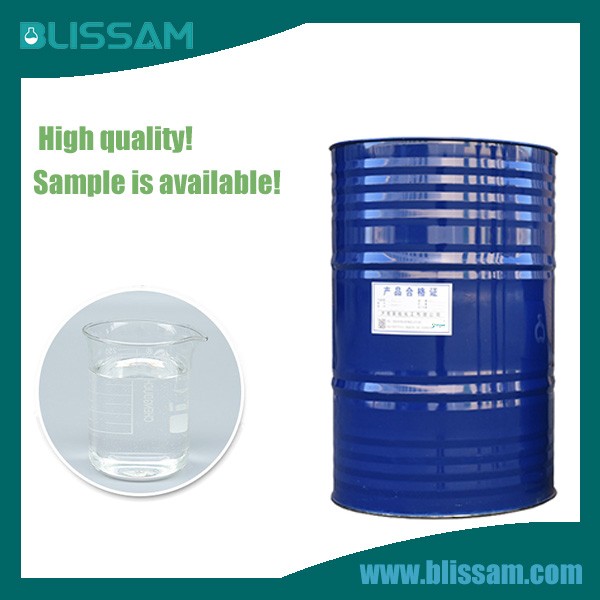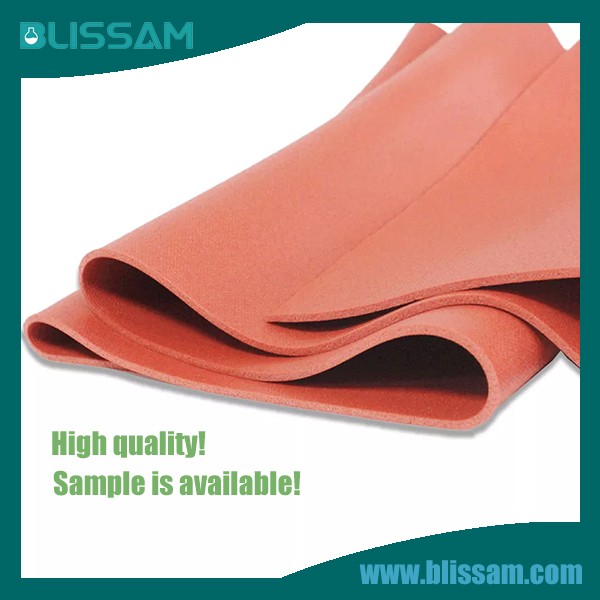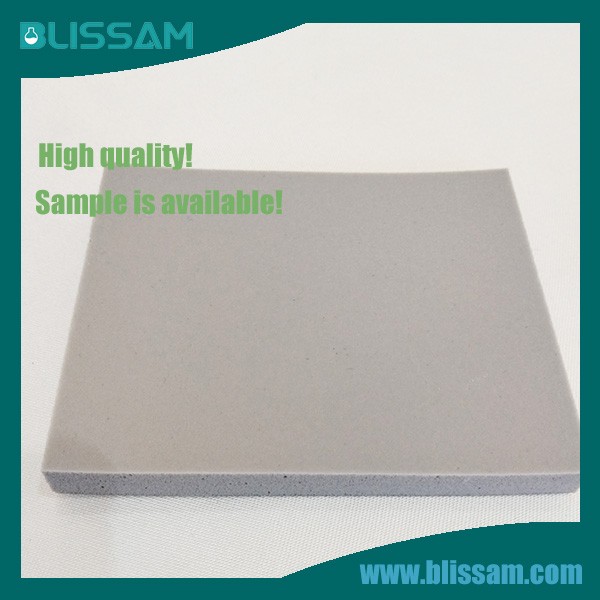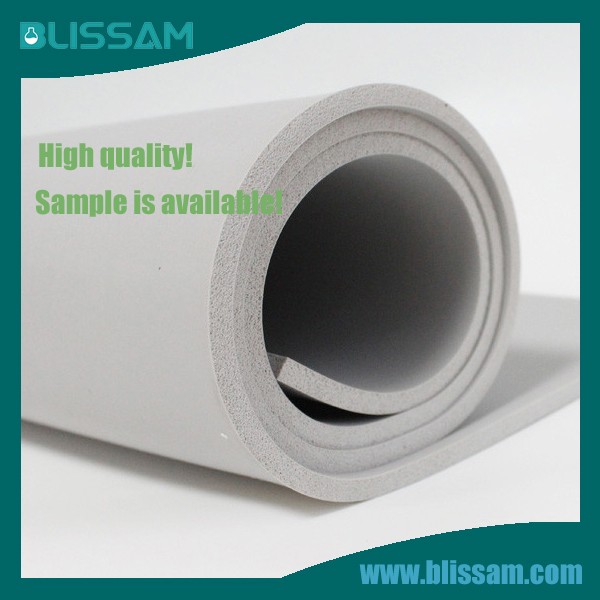Silicone-based materials are widely used in various industries due to their versatile properties, including heat resistance, flexibility, and durability. Among these materials, silicone release coatings and silicone foam stand out for their unique applications. However, they serve very different purposes, and understanding the distinctions between them is crucial for choosing the right product for your specific needs. In this article, we'll explore the key differences between silicone release coatings and silicone foam, their respective benefits, and how BLISSAM, a leading provider of silicone products, can help you make the best choice for your application.
Silicone release coatings are specialized coatings applied to surfaces to create a non-stick layer. These coatings prevent adhesives, resins, or other sticky substances from bonding to the surface, making them ideal for applications where easy release is essential. Silicone release coatings are commonly used in the production of labels, tapes, and liners, as well as in the baking and food processing industries.
Advantages of Silicone Release Coatings:
Non-Stick Properties:
Silicone release coatings provide exceptional non-stick performance, allowing materials to be easily separated from the coated surface without leaving residue.
Temperature Resistance:
These coatings can withstand high temperatures, typically up to 250°C, making them suitable for industrial processes that involve heat curing or baking.
Chemical Resistance:
Silicone release coatings are resistant to a wide range of chemicals, including solvents, oils, and greases, ensuring long-lasting performance in harsh environments.
Durability:
The coatings offer excellent durability, maintaining their non-stick properties even after repeated use. This makes them cost-effective for applications where multiple releases are required.

Silicone foam is a lightweight, flexible material created by introducing gas bubbles into a silicone rubber compound, resulting in a cellular structure. Silicone foam is known for its excellent thermal insulation, shock absorption, and sealing properties. It is commonly used in automotive, aerospace, electronics, and construction applications where cushioning, vibration dampening, or thermal insulation is needed.
Advantages of Silicone Foam:
Thermal Insulation:
Silicone foam provides outstanding thermal insulation, with low thermal conductivity values (as low as 0.03 W/m·K), making it ideal for applications where temperature control is crucial.
Shock Absorption:
The cellular structure of silicone foam allows it to absorb and dissipate energy, providing effective cushioning and protection against impacts and vibrations.
Flexibility and Compression Set Resistance:
Silicone foam maintains its flexibility and compression set resistance over a wide temperature range (-60°C to 200°C), ensuring consistent performance in varying conditions.
Water and Dust Sealing:
Silicone foam’s closed-cell structure makes it an excellent material for sealing against water, dust, and other environmental factors, making it suitable for outdoor and industrial applications.

While both silicone release coatings and silicone foam are made from silicone, they are designed for vastly different applications. Understanding these differences will help you choose the right product for your needs.
Functionality:
Silicone Release Coating:
Primarily used to create a non-stick surface, preventing adhesives and other materials from bonding to the coated surface.
Silicone Foam:
Used for cushioning, thermal insulation, and sealing, providing protection against impacts, temperature fluctuations, and environmental elements.
Physical Properties:
Silicone Release Coating:
Thin, smooth, and applied as a liquid that cures into a solid, non-stick layer.
Silicone Foam:
A spongy, lightweight material with a cellular structure, offering flexibility and compressibility.
Applications:
Silicone Release Coating:
Ideal for applications such as labels, tapes, bakery liners, and industrial molds where easy release is essential.
Silicone Foam:
Suitable for automotive gaskets, electronic device seals, thermal insulation pads, and vibration dampening components.
Durability and Longevity:
Silicone Release Coating:
Durable under repeated use but may need reapplication depending on the specific conditions.
Silicone Foam:
Highly durable, with a long lifespan even in harsh environments, requiring minimal maintenance.

BLISSAM is a trusted supplier of high-quality silicone products, offering both silicone release coatings and silicone foam tailored to various industrial applications. Here’s why BLISSAM stands out:
Quality Assurance:
BLISSAM’s products are manufactured to the highest standards, ensuring reliable performance, consistency, and durability.
Custom Solutions:
Whether you need a specialized release coating or a custom-formulated silicone foam, BLISSAM provides tailored solutions that meet your exact requirements.
Technical Expertise:
With extensive experience in the silicone industry, BLISSAM’s technical team offers expert advice and support to help you select the right product for your application.
Sustainability:
BLISSAM is committed to sustainability, using environmentally friendly processes and materials to minimize their ecological footprint.
Q1: Can BLISSAM’s silicone release coatings be used in food processing applications?
A1: Yes, BLISSAM offers food-grade silicone release coatings that are safe for use in food processing applications. These coatings meet FDA and other relevant regulatory standards, ensuring they are suitable for baking sheets, molds, and other food contact surfaces.
Q2: What thickness options are available for BLISSAM’s silicone foam products?
A2: BLISSAM’s silicone foam products are available in a range of thicknesses, from 1 mm to 25 mm, depending on the application. Custom thicknesses can also be produced to meet specific requirements.
Q3: How long does BLISSAM’s silicone release coating last before reapplication is needed?
A3: The longevity of BLISSAM’s silicone release coating depends on the specific application and conditions. In general, the coating can last for hundreds of release cycles, but periodic reapplication may be needed in high-wear environments.
Q4: Is BLISSAM’s silicone foam resistant to UV radiation?
A4: Yes, BLISSAM’s silicone foam is highly resistant to UV radiation, ensuring that it maintains its physical properties and performance even when exposed to direct sunlight for extended periods.

Choosing between silicone release coating and silicone foam depends on your specific application needs. Silicone release coatings are ideal for creating non-stick surfaces in industrial and food processing applications, while silicone foam excels in providing thermal insulation, shock absorption, and sealing. With BLISSAM’s high-quality products and expert guidance, you can be confident in selecting the right solution for your project, ensuring both durability and protection. Whether you need a custom release coating or a specialized foam material, BLISSAM has the expertise and product range to meet your requirements.
Products: Silicone Release Coating , Silicone Foam
Contact:
Phone: +86-15957191858
E-mail: info@blissam.com
Whatsapp:+8615957191858
Add: A647, No. 9, Xiyuan Road, Xihu District, Hangzhou, Zhejiang, China
We chat
